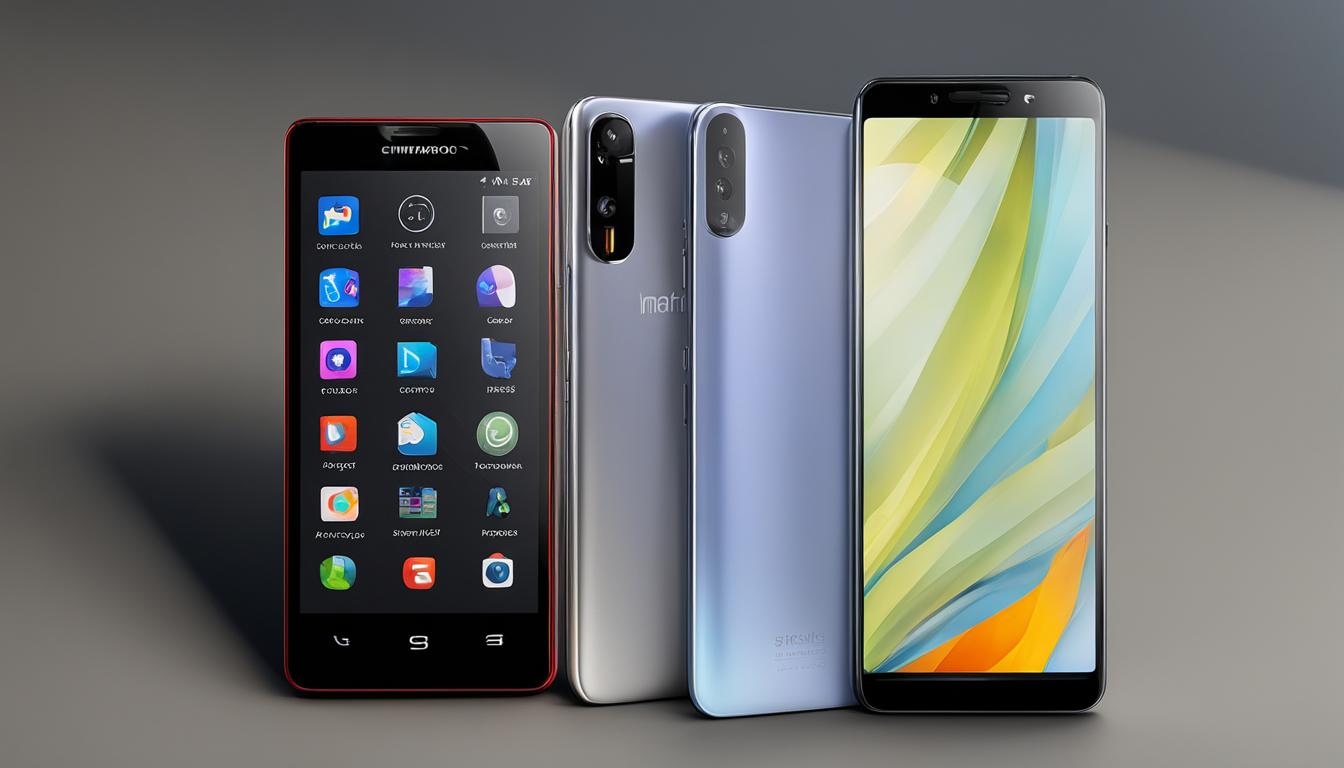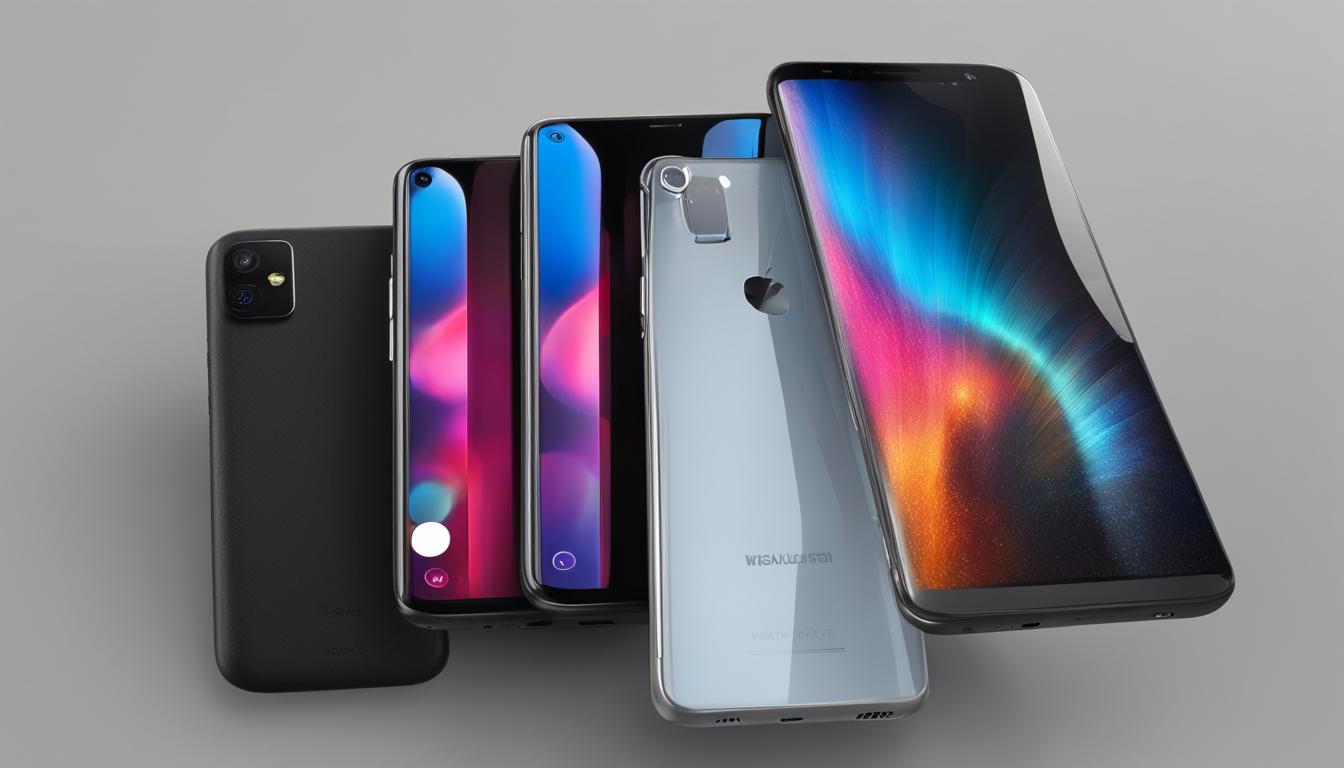QR codes and barcodes are both widely used for storing information about products and items. While they serve a similar purpose, there are significant differences between the two. Understanding these differences is essential for businesses to make informed decisions about which technology to implement.
Key Takeaways:
- QR codes are two-dimensional, allowing for more data storage compared to one-dimensional barcodes.
- Barcodes can only be scanned in a line, while QR codes can be scanned both vertically and horizontally.
- QR codes offer more detailed information about a product, such as its condition, manufacturing date, and repairs done.
- QR codes can be easily scanned using mobile devices, making them more convenient for businesses and consumers.
- The choice between QR codes and barcodes depends on the specific needs and requirements of a business.
Understanding Barcodes
Barcodes are widely used in various industries for their ability to store information in a machine-readable format. They consist of lines and spaces of varying widths and encode text-based information such as product details, inventory codes, and more. Let’s dive deeper and explore the different types of 1D barcodes and their advantages.
Types of 1D Barcodes
There are several types of 1D barcodes commonly used in different applications:
- Universal Product Code (UPC): The most widely recognized barcode, often seen on retail products.
- Code 39: A variable length barcode that can encode alphanumeric characters.
- Code 128: A high-density barcode used for complex data encoding.
- EAN-13: Similar to the UPC, it is commonly used in Europe and other parts of the world.
Each type of barcode has its own specifications and is suitable for different purposes. Choosing the right barcode depends on factors such as the type of information to be encoded and the industry requirements.
Advantages of 1D Barcodes
1D barcodes offer several advantages that make them a popular choice for businesses:
- Time and Cost Savings: Barcodes enable quick and efficient data entry, reducing the time and cost associated with manual data input.
- Error Reduction: By automating data entry, barcodes minimize the risk of human errors that can occur during manual data input.
- Simple Integration with Systems: Barcodes can be easily integrated into existing systems and workflows, improving operational efficiency.
- Universal Standard: Barcodes provide a universal standard that allows for seamless integration and communication across industries and countries.
These advantages make barcodes a valuable tool for various applications, from retail inventory management to library book tracking and postal services.
Now that we have a better understanding of barcodes, let’s explore the fascinating world of QR codes in the next section.
Understanding QR Codes
QR codes, or Quick Response codes, are two-dimensional codes that can store information both horizontally and vertically. They have gained popularity due to their versatility and ease of use. QR codes can hold much more data than traditional barcodes, including email addresses, product details, website URLs, and more. They are commonly used in marketing and consumer-facing applications, but they also have uses in industrial applications such as conveying operating instructions, managing facilities, and documenting maintenance and repairs.
One of the key advantages of QR codes is their contactless nature. With the rise of mobile technology, QR codes can now be easily scanned using smartphones and other mobile devices. This makes them a convenient option for businesses as they provide a safe and seamless way for customers to interact with their products or services. QR codes can be found on cereal boxes, posters, business cards, and various other marketing materials, enabling businesses to provide additional information and engage with their target audience.
Advantages of QR Codes
- High data storage capacity: QR codes can hold approximately one-hundred times more data than traditional barcodes. This makes them more suitable for storing detailed information about products or customers.
- Contactless interactions: QR codes allow for touch-free interactions, which is particularly beneficial in today’s environment where hygiene and safety are of utmost importance.
- Cost-effectiveness: QR codes can be generated quickly and inexpensively, allowing businesses of all sizes to utilize them in their marketing and operational activities.
- Streamlined transactions and payments: QR codes can be used for seamless payment processing, enabling customers to make transactions with ease using their mobile devices.
Overall, QR codes provide businesses with a powerful tool to enhance their marketing efforts, improve customer engagement, and streamline their operations. Their ability to store large amounts of data and their contactless nature make them a valuable asset in today’s digital age.
Data Storage Capacity and Creation
When it comes to data storage capacity, QR codes have a significant advantage over barcodes. QR codes can hold approximately one-hundred times more data than barcodes, making them more suitable for storing detailed information about products or customers. This extra data capacity allows businesses to include additional information such as product specifications, warranty details, or promotional offers within a single QR code.
Creating both QR codes and barcodes is a relatively straightforward process. Numerous online tools and software applications are available that allow businesses of all sizes to generate QR codes and barcodes quickly and inexpensively. These tools typically provide customization options for design, size, and data encoding format.
Table: Data Storage Comparison
| QR Codes | Barcodes | |
|---|---|---|
| Data Storage Capacity | High (approximately one-hundred times more data) | Low |
| Ease of Creation | Quick and inexpensive | Quick and inexpensive |
| Printing Quality | Resilient to smudging or poor printing due to error correction capabilities | Relies on high printing quality for successful reading |
It’s also worth noting that QR codes have built-in error correction capabilities, making them more resilient to smudging or poor printing quality. Even if a QR code is partially damaged or printed poorly, it can still be scanned and decoded accurately, thanks to the error correction algorithms embedded within the code. In contrast, barcodes rely on high-quality printing and accurate scanning conditions to ensure successful reading.
In summary, QR codes offer a much larger data storage capacity compared to barcodes, making them ideal for businesses that require more detailed information within their code. Both QR codes and barcodes can be created easily and inexpensively, and businesses can choose between the two based on their specific needs and requirements.
Applications and Uses
Barcodes and QR codes have a wide range of applications in various industries. Let’s explore the different uses of each:
Applications of Barcodes
Barcodes are commonly used for inventory management, allowing businesses to easily track and identify products. They are also utilized in retail, where barcodes on products enable efficient checkout processes and inventory control. In the shipping and logistics industry, barcodes are used to track packages and streamline the shipping process. Libraries use barcodes to catalog and manage their book collections, making it easier for patrons to check out books and for staff to organize them.
- Inventory management
- Retail checkout and inventory control
- Shipping and logistics tracking
- Library book cataloging
Applications of QR Codes
QR codes have become increasingly popular in marketing and advertising. They are commonly found on product packaging, allowing consumers to access additional product information, promotions, or discounts by scanning the QR code with their smartphones. QR codes are also used for event ticketing, allowing attendees to easily access tickets and enter events. In educational settings, QR codes can be used to provide supplementary materials or interactive content to support learning. Additionally, QR codes are utilized in contact tracing during public health emergencies, providing a convenient way for individuals to check-in at establishments.
- Marketing and advertising
- Event ticketing
- Educational supplements
- Contact tracing
| Barcodes | QR Codes |
|---|---|
| Inventory management | Marketing and advertising |
| Retail checkout and inventory control | Event ticketing |
| Shipping and logistics tracking | Educational supplements |
| Library book cataloging | Contact tracing |

Conclusion
In conclusion, QR codes and barcodes each have their own unique characteristics and applications. QR codes, with their two-dimensional format, offer a larger data storage capacity and the ability to provide more detailed information about products or items. They are particularly advantageous for businesses looking to implement contactless interactions and streamline payment processing.
On the other hand, barcodes, with their one-dimensional structure, are widely recognized and offer benefits such as time and cost savings, error reduction, and easy integration with systems. They are commonly used in various industries, including retail, shipping, and inventory management.
When deciding between QR codes and barcodes, businesses should consider their specific needs and requirements. Both options can be valuable tools for tracking inventory, managing operations, and improving efficiency and productivity. By understanding the distinctions and advantages of each, businesses can make informed decisions on which technology to implement.
FAQ
How do QR codes differ from barcodes?
QR codes are two-dimensional codes that can store much more data than barcodes, including email addresses, product details, and website URLs. Barcodes, on the other hand, are one-dimensional and can only store text-based information, such as a product’s type, size, and color.
What are the advantages of barcodes?
Barcodes offer several advantages for businesses, including time and cost savings, error reduction, simple integration with systems, and a universal standard that allows for seamless communication across industries and countries.
What are the advantages of QR codes?
QR codes have gained popularity due to their versatility and ease of use. They can hold much more data than barcodes and are commonly used in marketing and consumer-facing applications. They also offer advantages such as contactless interactions, cost-effectiveness, and streamlined transactions and payments.
How much data can QR codes and barcodes hold?
QR codes can hold approximately one-hundred times more data than barcodes, making them more suitable for storing detailed information about products or customers.
Where are barcodes commonly used?
Barcodes are widely used for labeling inventory, raw materials, library books, and tracking packages in the postal service and shipping industry.
Where are QR codes commonly used?
QR codes have a wide range of applications and can be found on cereal boxes, posters, business cards, and more. They are commonly used in marketing, but also have uses in operational instructions, facilities management, maintenance and repairs, and regulatory compliance.
Which is more resilient to smudging or poor printing, QR codes or barcodes?
QR codes have built-in error correction capabilities, making them more resilient to smudging or poor printing. Barcodes, on the other hand, rely on high printing quality and accurate scanning for successful reading.
What are the main differences between QR codes and barcodes?
QR codes are two-dimensional and can be scanned both vertically and horizontally, allowing for a larger amount of data to be stored. Barcodes, on the other hand, are one-dimensional and can only be scanned in a line, limiting the amount of information they can store.
 Skip to main content
Skip to main content


